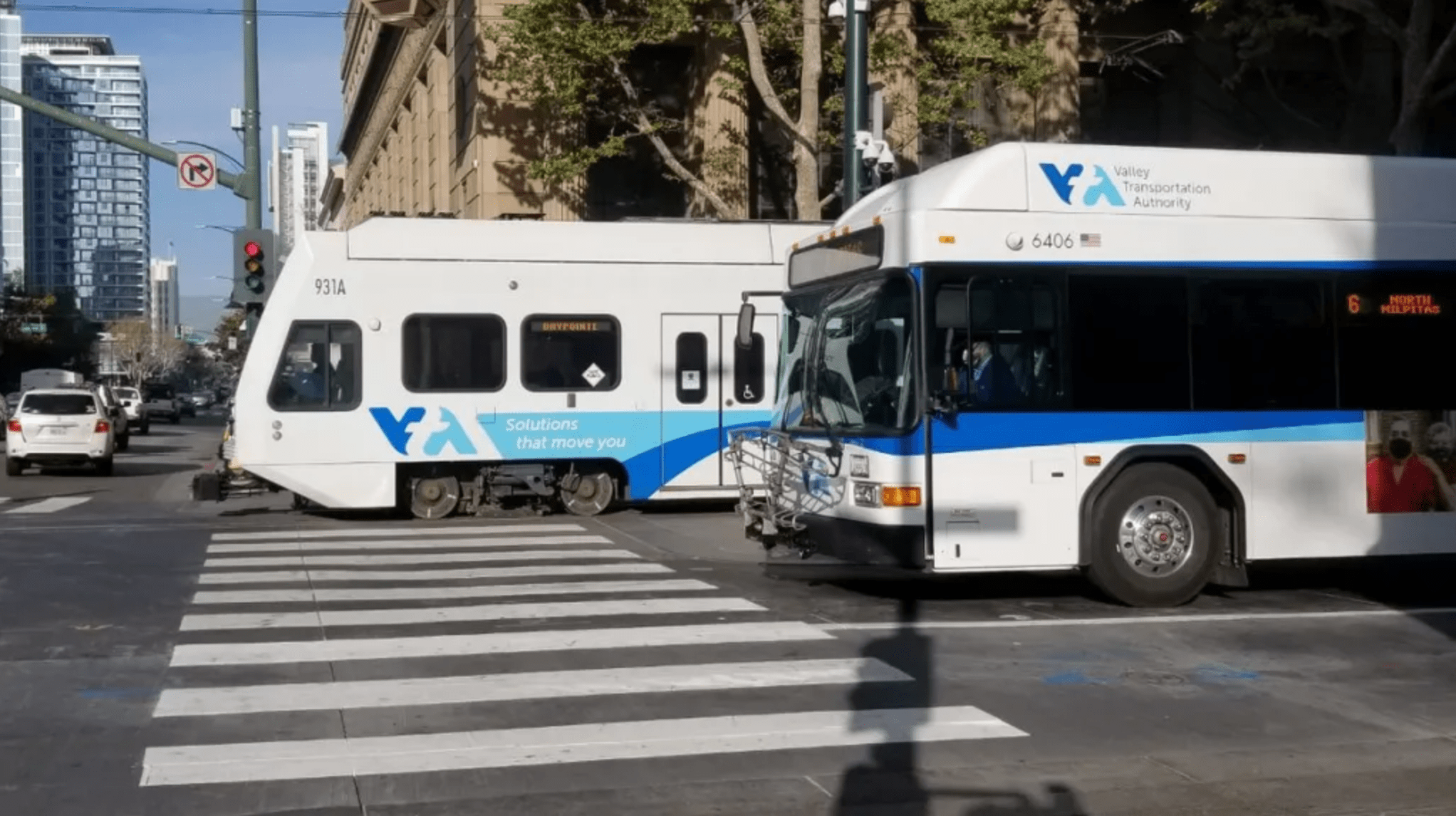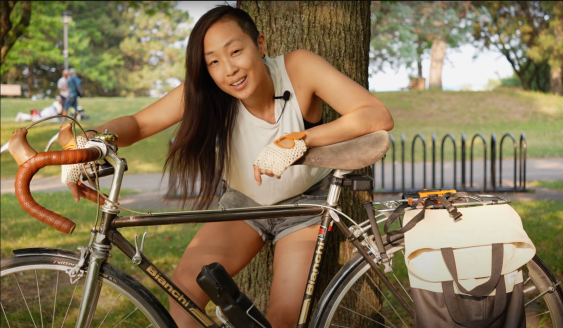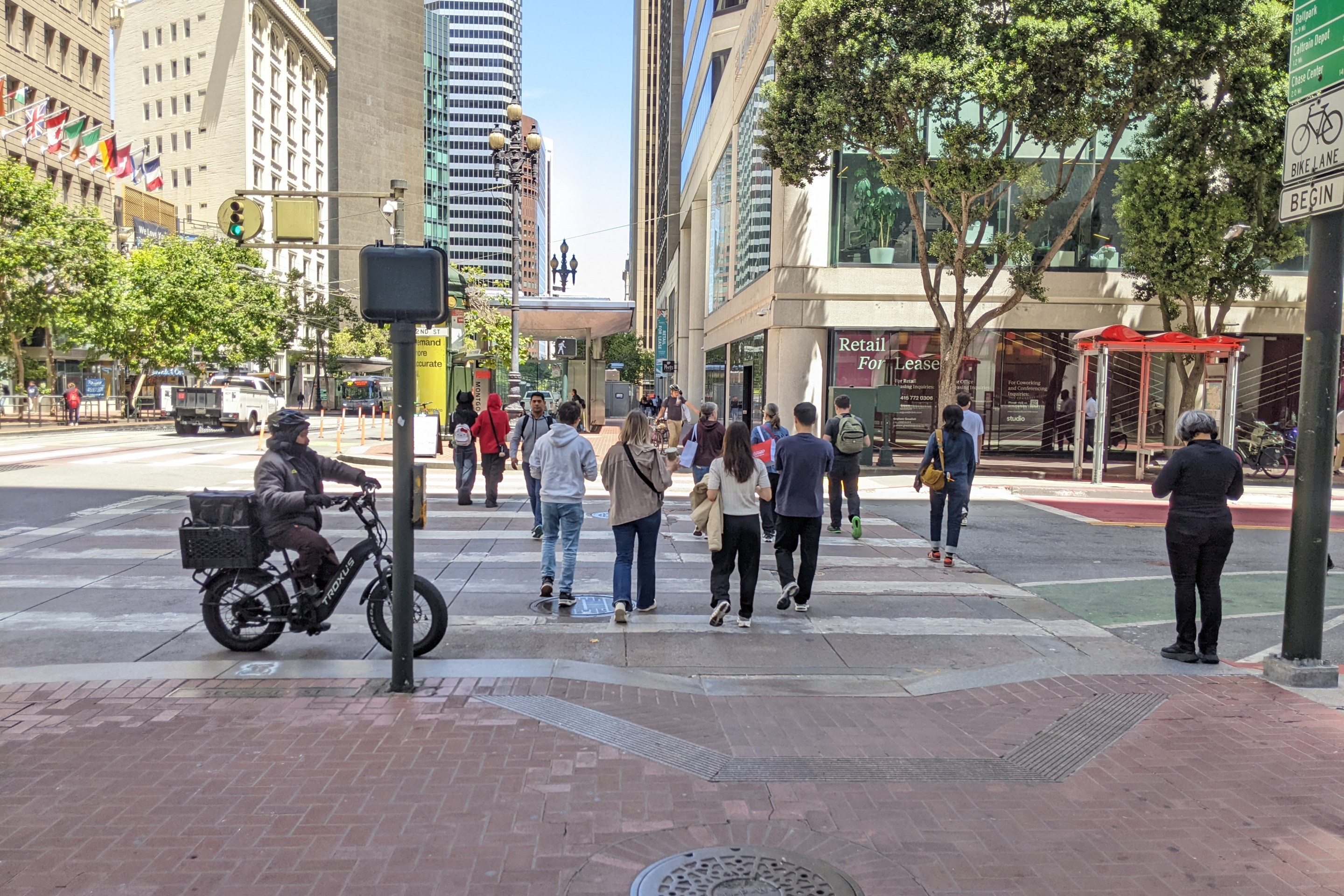
Update 6/22: The SFMTA has retracted its report of a 651 percent increase in bike traffic on northbound San Jose Avenue in morning peak hours, which was featured in an earlier version of this article.
Evening bike traffic increased by 62 percent on northbound San Jose Avenue after a traffic lane was removed and the bike lane was widened with a buffer zone a year ago, according to the SFMTA.
As part of the ongoing traffic-calming project, Caltrans last week also removed a highway off-ramp lane leading on to San Jose, a.k.a. the Bernal Cut.
The "incredible change" in bike counts reported by the SFMTA "shows the power of streets that make people feel safe," SF Bicycle Coalition community organizer Chema Hernández Gil wrote in a blog post on Monday.
San Jose, which divides Glen Park and Bernal Heights, is the most direct route to downtown from southern neighborhoods like the Excelsior and Ingleside.
The SFMTA compared 72-hour bike counts on the Monterey Boulevard ramp, just before it merges on to northbound San Jose. The average bike counts were taken during morning peak hours in January 2014 and January 2015, according to SFMTA data [PDF]. [Update: The SFMTA said the bike counts included in that spreadsheet were not accurate. A new version is available in this PDF.]
The data was collected as part of a two-phase pilot project aimed at measuring how a road diet and better bike lane protection can help tame driving speeds and attract more people to commute by bike on San Jose north of Highway 280.
"San Jose Avenue has long been a pseudo-freeway with huge negative impacts on the surrounding areas due to over-the-top speeding," said a statement from Supervisor Scott Wiener, who pushed for the safety measures. "This pilot program is designed to reduce speeds, improve neighborhood quality of life, and allow for diverse uses of the road, including both drivers and cyclists. The pilot also allows cyclists to safely use the bike lane, and an increase in cycling on San Jose Avenue is a good thing. I look forward to the results of the pilot and to having a safer, multi-modal San Jose Avenue for all users."
When the first phase was implemented last June, the SFMTA and Caltrans removed one of three traffic lanes on northbound San Jose to match the geometry of the street’s southbound side. The leftover space was used to upgrade the existing narrow bike lane with a buffer zone and plastic posts to separate it from motor traffic.
As part of the second phase, Caltrans removed the second Highway 280 off-ramp lane last week, and will measure its effectiveness in bringing down excessive traffic speeds, along with that of other measures in the coming months. Caltrans added the second ramp lane in 1992 after the Loma Prieta earthquake, as a supposedly temporary measure to accommodate traffic re-routed away from freeway repairs.
San Jose Avenue has a speed limit of 45 mph, and before the road diet last June, 15 percent of drivers traveled faster than 48 mph (a figure known to engineers as the "85th percentile speed"). On the off-ramp, that speed was 57 mph.
The removal of San Jose's third lane didn't achieve the SFMTA's goal of bringing the 85th percentile speed down to 35 mph. The speed decreased by only 6 percent, "a fairly minor drop from 49 mph to 46 mph," the SFMTA wrote in an email blast. (Look for the rest of the reported data highlights below.)
The results of the SFMTA's survey from last fall haven't been announced, but the agency's email said its staff has heard both support for the project and "questions and concerns" around "increased congestion on San Jose Avenue, increased traffic on St. Marys Avenue, and vehicle encroachment into the separated bikeway."
In addition to the removal of the off-ramp lane, the SFMTA said it plans to make more bike lane upgrades and other possible traffic-calming measures in the coming months:
- Install additional delineators in the bikeway buffer between Rousseau & Milton, between Milton & St. Marys, and approaching Randall, to further deter vehicle encroachment into the separated bikeway (date to be determined).
- Investigate possible signal timing adjustments at Randall to increase green time for northbound San Jose traffic (this analysis will be done in conjunction with proposed changes by the Muni Forward project).
The agency also plans to reach out to neighbors on side streets "to determine the level of support for possible changes designed to decrease cut-through traffic on their streets, and to slow down the traffic that is there," the email said. Proposals include:
- Installing speed humps on Rousseau between San Jose and Bosworth.
- Making Milton two-way south of San Jose; right turns from San Jose would continue to be prohibited.
- Installing a bulbout at the northwest corner to shorten pedestrian crossing distances and physically deter right turns from San Jose.
- Installing speed humps on St. Marys between San Jose and Mission.
- Prohibiting right turns from San Jose to St. Marys.
- Installing a bulbout at the northwest corner to shorten pedestrian crossing distance and physically deter right turns from San Jose.
The remaining data collection is expected to be finished in September. The SFMTA Board of Directors could approve permanent changes by the end of the year, based on planners' recommendations that result from the findings. A "post-pilot preferred design" could be implemented in coordination with a re-paving project by the Department of Public Works by next May.
If mere paint and plastic posts made people feel safe enough to yield a 62 percent jump in bike commuting, imagine what more robust protection like concrete barriers could do.
As for the traffic lane reduction's impacts on car traffic over the last year, here are the rest of the findings highlighted in the SFMTA email:
- San Jose Avenue – a.m. peak hour traffic volumes decreased 21 percent and speeds decreased only 6 percent, a fairly minor drop from 49 mph to 46 mph.
- Rousseau Street – a.m. peak hour traffic volumes increased 79 percent and speeds increased 18 percent.
- Milton Street – a.m. peak hour traffic volumes decreased 22 percent and speeds decreased 4 percent.
- St. Marys Avenue – a.m. peak hour traffic volumes increased 13 percent in the southbound direction and decreased 5 percent in the northbound direction. Similarly, a.m. peak hour traffic speeds on St. Marys Avenue increased in both the southbound and northbound directions, 19 percent and 63 percent, respectively. It also should be noted that during the p.m. peak hour southbound traffic volumes on St. Marys Avenue rose by 125 percent.





